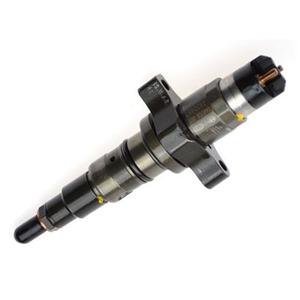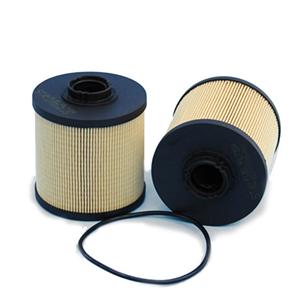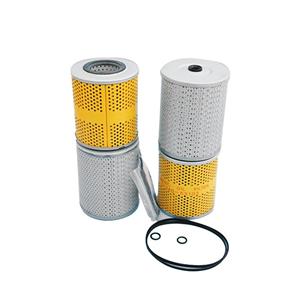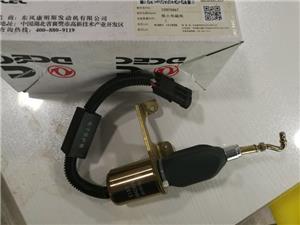Working Principle of Four-Stroke Diesel Engines
Working Principle of Four-Stroke Diesel Engines
An engine is the power source of a generator set. The engine of a generator set is a thermal power device, referred to as a thermal engine. A thermal engine converts the thermal energy generated by fuel combustion into mechanical energy by means of the state change of the working fluid.
According to the number of strokes in the piston reciprocating movement of the engine during a working cycle, it is divided into four-stroke and two-stroke engines. An internal combustion engine in which the piston reciprocates for four strokes in one working cycle is called a four-stroke reciprocating piston internal combustion engine, and the piston reciprocates two strokes to complete a working cycle is called a two-stroke reciprocating piston internal combustion engine. The diesel generator sets we currently produce are based on four-stroke diesel engines.
The work of a four-stroke diesel engine is completed by the four processes of intake, compression, combustion and exhaust. These four processes constitute a working cycle. A diesel engine in which the piston goes through four processes to complete a working cycle is called a four-stroke diesel engine. Details as follows:
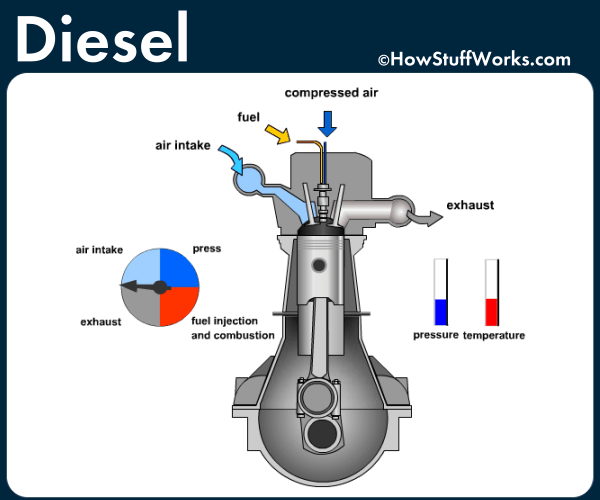
(1) Intake
The piston moves from top dead center to bottom dead center, the exhaust valve is closed, and the intake valve is opened. The combustible mixture is sucked into the cylinder through the intake valve until the piston moves down to bottom dead center.
(2) Compression
The crankshaft continues to rotate and the piston moves from bottom dead center to top dead center. At this time, the intake valve and exhaust valve are closed, and the cylinder becomes a closed volume. The combustible mixture is compressed, and the pressure and temperature continue to rise. When the piston reaches the top stop The compression ends when you click.
(3) Combustion
Intake valve and exhaust valve remain closed. When the piston is at the compression close to the top dead center (i.e. ignition advance angle), the spark plug generates an electric spark to ignite the combustible mixture. After the combustible mixture burns, it releases a large amount of heat, which causes the gas temperature and pressure in the cylinder to rise sharply, pushing the piston from The top dead center moves to the bottom dead center, the crankshaft is rotated through the connecting rod and the mechanical work is output. In addition to maintaining the engine itself, the rest is used for external work. As the piston moves downward, the internal volume of the cylinder increases, and the gas pressure and temperature decrease. When the piston moves to the bottom dead center, the combustion ends.
(4) Exhaust
When the exhaust is regarded as the end of the work, the exhaust valve is opened, the intake valve is still closed, and the exhaust gas pressure is used for free exhaust. When the piston reaches the bottom dead center and then moves to the top dead center, the exhaust gas will continue to be forced After the piston passes the top dead center, the exhaust valve is closed and the exhaust stroke ends.
The crankshaft continues to rotate, the piston moves from the top dead center to the bottom dead center, and the next new cycle is started. In each working cycle, the piston reciprocates four strokes at the top and bottom dead center, correspondingly the crankshaft rotates two revolutions.
Conclusion: The piston of a four-stroke diesel engine reciprocates four strokes up and down (the crankshaft rotates 180° per stroke). In a working cycle, the crankshaft rotates 720, the intake and exhaust valves are opened and closed once, which is called a four-stroke engine.

